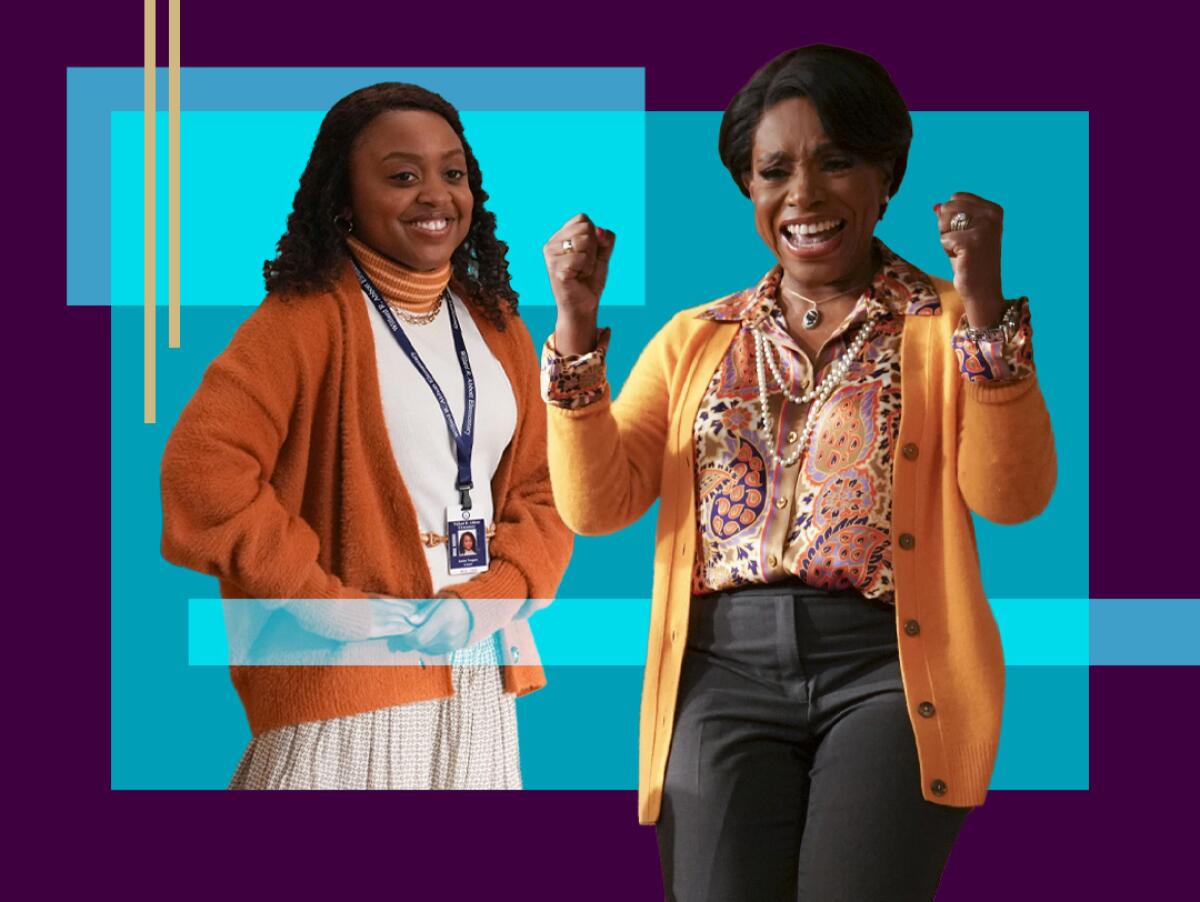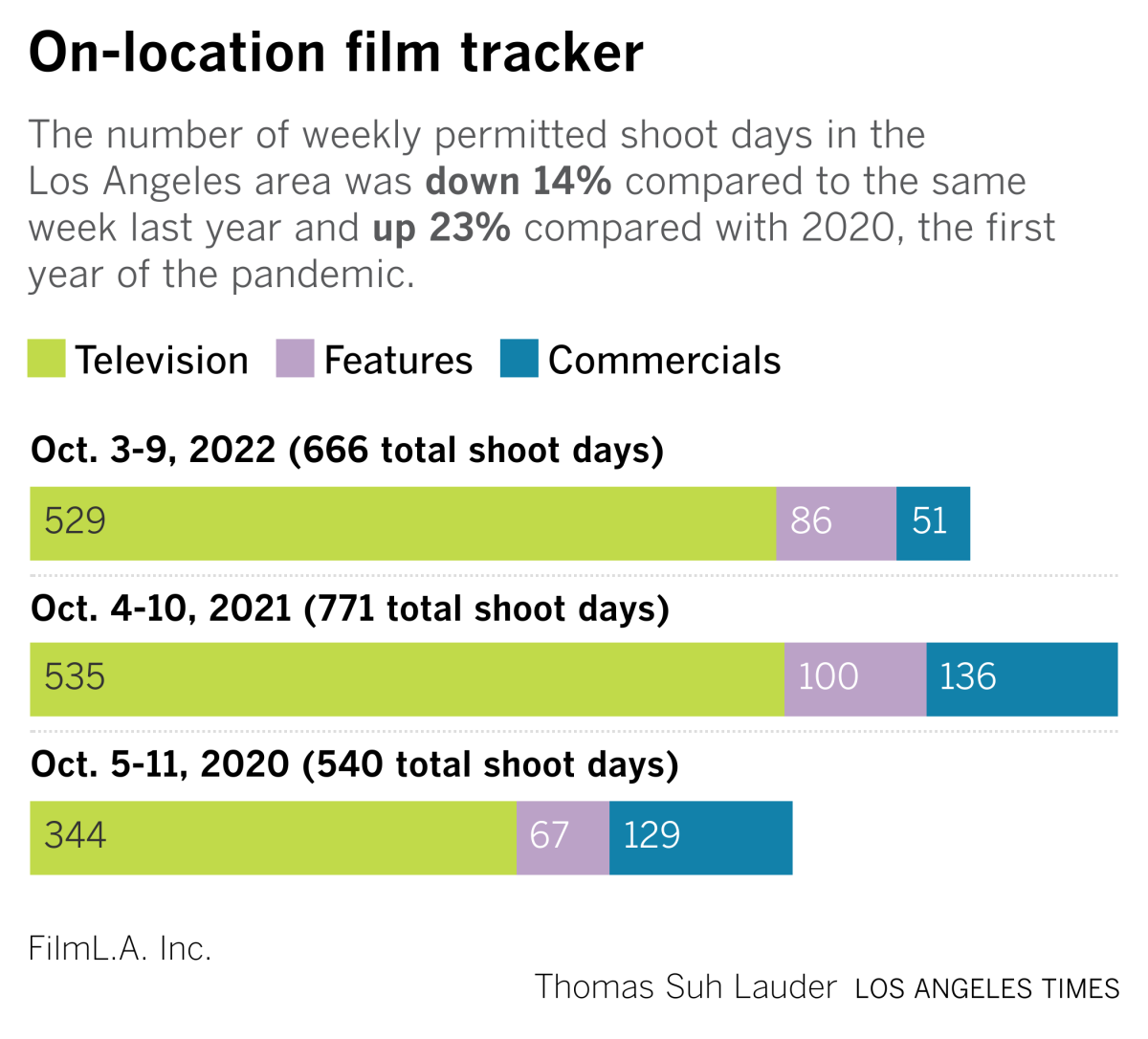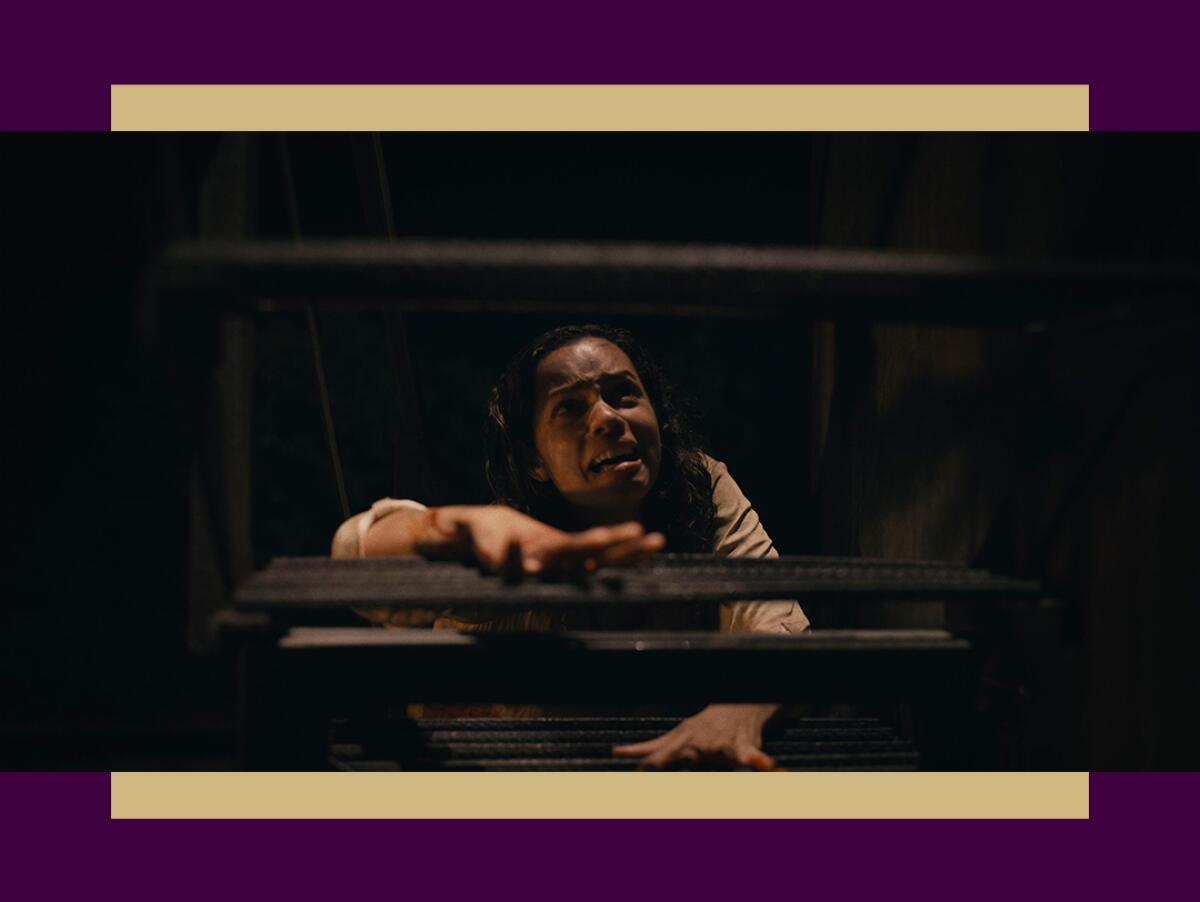How broadcast TV programming can survive and thrive in a streaming-obsessed world

- Share via
Welcome to the Wide Shot, a newsletter about the business of entertainment. Sign up here to get it in your inbox.
Happy Tuesday from the Wide Shot. It’s been quite a week. Harvey Weinstein is on trial again, this time in Los Angeles; David Nevins is out at Paramount Global; John Fithian is retiring from the National Assn. of Theatre Owners; Paramount’s “Smile” is No. 1 at the box office again; and Try Guys fans are mad at “SNL” for not being sufficiently upset about the Try Guys cheating scandal. Now, on to the newsletter ...
It’s ‘Elementary’
Let’s face it, broadcast TV isn’t cool. But the type of widely appealing, not too expensive programming that has long dominated the airwaves for the big networks — CBS, ABC, NBC — may be just the kind of thing a streaming-obsessed business now needs more of.
Media companies are increasingly using the draw of their network sitcoms, soaps and reality competition shows to boost their streaming platforms. Walt Disney Co. moved “Dancing With the Stars” from ABC to Disney+. “Days of Our Lives” has migrated from NBC to Peacock. A movie based on the beloved cult comedy “Community” is finally happening — also on Peacock. Even “The Mole” is back, this time on Netflix.
The streaming era has produced a renaissance for high-end, niche programming, the kind of material that gets entertainment journalists (like me) excited but doesn’t connect with most people. Many of the shows that do draw large audiences to Netflix, HBO/HBO Max and Amazon’s Prime Video — “The Sandman,” “House of the Dragon,” “The Lord of the Rings: The Rings of Power” — are extraordinarily expensive, with budgets driven up by the special effects needed to make them “event” programming worthy of their respective franchises.
No wonder companies are filling out their streaming lineups with more network-style shows. And we’re not just talking about the rush for sports rights, though that’s part of it, as my colleague Stephen Battaglio has written.
“If I’m being candid, I’m not looking to find a $20 million-an-episode premium drama,” CBS Chief Executive George Cheeks told the Wall Street Journal’s Joe Flint in an interesting recent article about how networks have essentially become the “farm teams” for series that end up on streaming.
Streaming long ago became the escape pod for network programs that turned out to be too narrow for the traditional airwaves. But it may also be the case that streamers need broadcast-style programming to reach bigger audiences at lower budgets. The classic more-bang-for-your-buck idea. “Ted Lasso,” for example, may be an Apple original. But in its style and tone, the show, produced by Warner Bros. Television, is not too different from a network sitcom dressed in prestige TV clothing, sporting a British accent and way more f-bombs.
Network shows certainly find a big portion of their audiences on direct-to-consumer services. Take “Abbott Elementary,” the ABC comedy about a struggling Philadelphia public school, which became a rare Emmy contender among the big nets this year. (It was nominated for comedy series, losing to “Ted Lasso,” and won for comedy writing.)
In the context of modern TV viewing habits, “Abbott,” produced by Warner Bros. TV and Disney’s 20th Television, does solid numbers on linear ABC. But much of its audience catches up later, including on Disney-controlled Hulu, which airs episodes the next day.

The second-season premiere opened with an average of 2.9 million viewers and a 0.6 rating in the key 18-49 audience demographic, according to Nielsen. But after seven days, according to ABC, its demo rating had reached 2.38, an increase of 318%, with overall viewership hitting 7 million, including Hulu and DVRing. So Disney benefits from having “Abbott” on Hulu, its outlet for “general entertainment” content, but there’s no real reason Quinta Brunson’s warm, funny and family-friendly series wouldn’t also work on Disney+, already the streaming home of another ABC comedy, “black-ish.” Right now, the first season of “Abbott” is streaming on Warner Bros. sister streamer HBO Max, in another quirk of the TV distribution landscape.
Streamers understand the power of comfort food programming, especially when it comes to their libraries.
“NCIS” and “Grey’s Anatomy” are consistently among the top 10 shows streaming on U.S. television screens every week (both are available on Netflix), according to Nielsen, though with the caveat that those shows each have hundreds of episodes that count toward the data firm’s tallies and rankings. The working theory of streaming’s programming model is that you need the splashy sci-fi shows to draw in subscribers, who then stick around because, oh, hey, they haven’t rewatched the entirety of “Friends” lately, so why not? Broadcast shows may not get the headlines, but they can be a good hang.
Shows like “Abbott” and CBS’ comedy “Ghosts” help make the argument that it doesn’t just have to be the oldies.
This is not some nostalgic pitch for maintaining the relevance of the broadcast networks as distribution platforms. Ratings, overall, are still falling. Linear television, in general, is on the outs. Cord-cutting is no passing fad. In fact, it has accelerated.
But as streaming services consolidate and as more of them get into the advertising business, they need more material that caters to a general audience. Creating the latest police procedural or workplace sitcom is not sexy. It may not make yours the most popular table at the Polo Lounge or fill your office with Emmys, but it can get you what streamers need most: shows that stick.
Stuff we wrote
— Labor of love. Frank Biondi ran Viacom and built Nickelodeon. Now his youngest daughter, Jane Biondi Munna, is helping to tell the late media executive’s story. Frank Biondi died in November 2019 at 74. Meg James tells the tale of how the book project deepened a father-daughter bond. Last month, the Biondi family self-published “Let’s Be Frank: A Daughter’s Tribute to Her Father, the Media Mogul You’ve Never Heard Of.”
— Journalist Nikki Finke dead at 68. Her acerbic, combative — some would say bullying — style did more to influence today’s Hollywood reporting than anyone else. Finke may be gone, but she leaves behind multiple imitators. Our obituary.
— ICYMI. ‘Glass Onion’ gets a weeklong theatrical release ahead of its premiere on Netflix. Supreme Court won’t review copyright fight over ‘What Men Want.’ CNN’s Jim Sciutto is taking a leave of absence. Nexstar Media Group names new leadership for CW Network.
‘Rust’ settlement.
Nearly a year after cinematographer Halyna Hutchins was killed on the film set of “Rust” in the incident involving a gun fired by producer and actor Alec Baldwin in New Mexico, the Hutchins family, Baldwin and the producers reached an undisclosed settlement in a wrongful-death lawsuit. Hutchins’ husband, Matthew Hutchins, will get an executive producing credit on the movie, which aims to resume production in January.
But will this affect the criminal investigation?
- Dist. Atty. Mary Carmack-Altwies of New Mexico’s First Judicial District vowed to proceed with the case, in which she has said up to four people, including Baldwin, could be charged. “No one is above the law,” her office said in a statement.
- But experts told The Times that the settlement could complicate the D.A.’s case if, for example, she had planned to call Matthew Hutchins to the stand to talk about the victim.
Number of the week

That’s the amount in penalties Kim Kardashian will pay to the Securities and Exchange Commission after plugging a cryptocurrency on social media without disclosing what she was compensated for promoting it. Crypto skeptics are predicting — or hoping — that this marks a turning point in the trend of celebrities shilling for everything blockchain. Maybe that’s wishful thinking. But as Brian Contreras reported, the SEC is clearly hoping the penalties for Kardashian will be an “influencer” of a different kind for other prominent pushers of crypto goods and currencies.
L.A. film shoots
On-location shoot days in Los Angeles were down 14% last week compared with the same week a year earlier, according to FilmLA data.

Best of the web
— The real lesson of ‘Bros’: It’s OK to let gay art bomb (LAT)
— How YouTube created the attention economy (New Yorker)
— Elon + Twitter = ??? (Bloomberg)
Before and after:
— Chris Pratt’s Mario just sounds like Chris Pratt (LAT)
— ‘Super Mario’ trailer without Chris Pratt (AV Club)
Finally ...

It’s tough to get to the movies with a new baby in the house, but I finally got out to see Zach Cregger’s demented film “Barbarian” over the weekend. Check out the list of films that influenced the movie here. It’s as good a Halloween watchlist as you’re likely to find. Then read this only-in-Los Angeles story about a couple encountering a mountain lion when returning home from seeing “Barbarian.” I can understand why they’d be a little on edge.
Inside the business of entertainment
The Wide Shot brings you news, analysis and insights on everything from streaming wars to production — and what it all means for the future.
You may occasionally receive promotional content from the Los Angeles Times.




